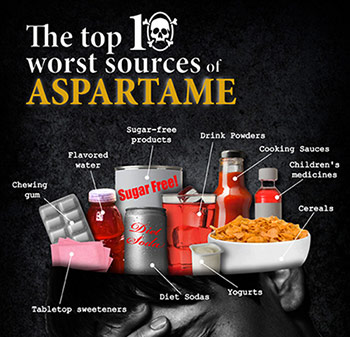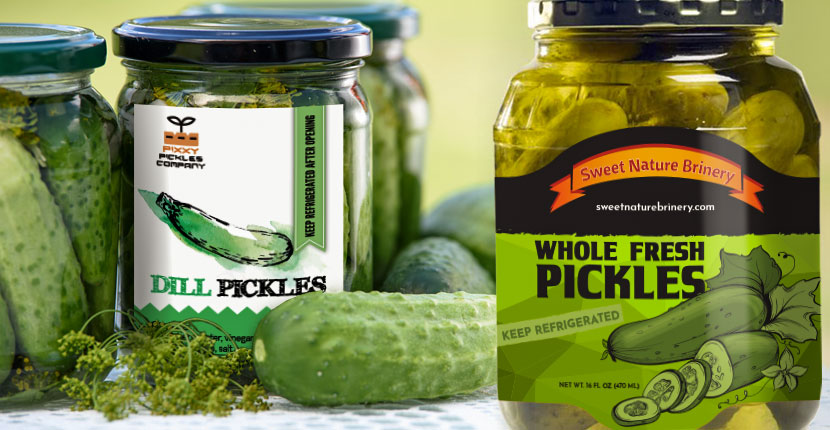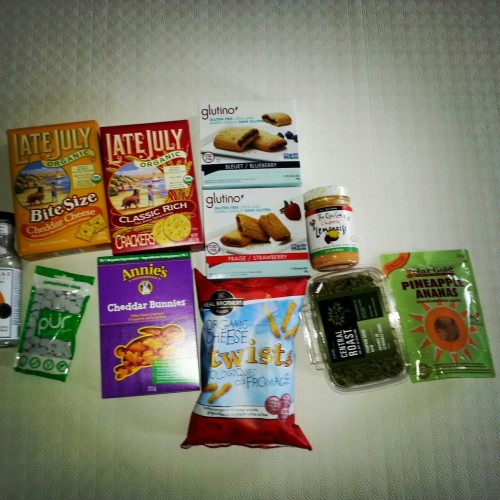39 aspartame on food labels
7 Nutrition Label Ingredients to Avoid - Walker Methodist Artificial Sweeteners such as Aspartame, Sucralose, and Saccharin ... These food label ingredients are often found in processed meats such as bacon, deli/sandwich meat, and hot dogs. They have been known to cause colon cancer and lead to heart disease and obesity. This is why it is important to have good quality meats! Food Additive Status List | FDA Color additives, 21 CFR Parts 70, 71, 73, 74, 80 & 82. Go to the Color Additives Status List. Please send corrections or additions to the list to Harold Woodall, FDA/CFSAN Office of Food Additive ...
All About Aspartame - Food Insight Aspartame is a type of low-calorie sweetener. It's produced from two common amino acids—aspartic acid and phenylalanine, each of which are found naturally in many foods including fruits, vegetables, meats and eggs. Aspartame contains calories—four calories per gram just like sugar. But aspartame is 200 times sweeter than sugar, so very ...

Aspartame on food labels
Aspartame is not marketed as AminoSweet on food labels While a company that produces aspartame did rename its product for marketing purposes in 2010, this was a move by only one company manufacturing aspartame. On food labels, aspartame still cannot be... What is Aspartame (E951) in food? Uses, Safety, Side effects and More The purpose of aspartame in food is to reduce sugar and calories intake. And you may find it in many food, and here is a common food list that may with it: Carbonated soft drinks Powdered drink Instant coffee and tea beverages Fruit juice Tabletop sweeteners Dairy products Frozen desserts, puddings Yogurts Chewing gum Breath mints Candy Cereals Food energy - Wikipedia Many governments require food manufacturers to label the energy content of their products, to help consumers control their energy intake. To facilitate evaluation by consumers, food energy values (and other nutritional properties) in package labels or tables are often quoted for convenient amounts of the food, rather than per gram or kilogram; such as in "calories per serving" or "kcal per 100 ...
Aspartame on food labels. How To Read Food and Beverage Labels - National Institute on … 24-02-2022 · Sometimes, food and beverage packaging includes terms that may try to convince the consumer the food is healthy. To help avoid confusion, the FDA sets specific rules for what food manufacturers can call “light,” “low,” “reduced,” “free,” and other terms. This type of labeling may have little to do with how nutritious the food is. Chemical Cuisine Ratings - Center for Science in the Public Interest CSPI ranks food additives—from “safe” to “avoid”—in this definitive rating of the chemicals used to preserve foods and affect their taste, texture, or appearance. Nutrition Action provides honest, unbiased, science-based advice on nutrition and health. Read the Current Issue. CFR - Code of Federal Regulations Title 21 Sec. 172.804 Aspartame. The food additive aspartame may be safely used in food in accordance with good manufacturing practice as a sweetening agent and a flavor enhancer in foods for which... A List of Foods Containing Aspartame | livestrong Aspartame is an artificial sweetener accidentally discovered by a scientist researching an anti-ulcer medication in 1965, according to the International Food Information Council Foundation. It's composed of two amino acids: aspartic acid and phenylalanine.
What Foods Contain Aspartame? | MD-Health.com Candies that are labeled sugar free like chewing gum, hard candy, candy chews or breath mints will use aspartame. Gum that tends to have aspartame includes Wrigley's Extra, Airwaves and Orbit products. Yogurt. Yogurts that are sugar or fat free or those that have a drinkable consistency will usually be made with a low-fat milk and aspartame. Everything You Need to Know About Aspartame - Food Insight Aspartame is a low-calorie sweetener that has been used for decades as a way to lower one's intake of added sugars while still providing satisfaction from enjoying something sweet. Aspartame is about 200 times sweeter than sugar, and as such only a small amount of the sweetener is needed to match the sweetness provided by sugar. Why Does Aspartame Have a Warning Label? | Pediatric Case and Reference ... Aspartame (L-aspartyl-L-Phemethyl ester) is an artificial sweetener that metabolizes to Phe, L-aspartic acid and methanol. It was first discovered in 1965, and approved by the US Federal Drug Administration in 1981. Allergen declarations, warnings, and advisory statements on food labels ... These plain English allergen labelling changes will help people find allergen information on food labels more quickly and easily so they can make informed and safe food choices. Food businesses have until 25 February 2024 to update their labels and train their staff so the information they give customers meets the new rules.
List of ingredients and allergens on food labels - Food labels ... Health Canada and the CFIA encourage food manufacturers and importers to use the title "May contain:" or "May contain" to introduce the cross-contamination statement on food labels. If a title is used, it must appear in bold when the statement appears on the same line as the ingredient list or the "food allergen source, gluten and added sulphites" statement [B.01.010.4(1)(d), FDR ]. What is other names for aspartame - Food Additives & Ingredients ... Aspartame has many names, Aspartame is one of the most common artificial sweeteners in use today. It is sold under the brand names NutraSweet and Ajinomoto, Aspartame is made by joining together the amino acids aspartic acid and phenylalanine. Amino acids are the building blocks of proteins and are found naturally in many foods. PKU, Allergies and Other Sensitivities - Aspartame Some of the reported side effects from aspartame that have been tested include headaches, nausea, dizziness, nasal congestion, eczema, asthma, mood changes and tingling, but research to date has not confirmed these associations even when aspartame was provided in amounts far greater than people typically consume. How To Read Food and Beverage Labels | National Institute on ... Feb 24, 2022 · Sometimes, food and beverage packaging includes terms that may try to convince the consumer the food is healthy. To help avoid confusion, the FDA sets specific rules for what food manufacturers can call “light,” “low,” “reduced,” “free,” and other terms. This type of labeling may have little to do with how nutritious the food is.
Read Your Labels: Top Ten Additives to Avoid - #2 Aspartame If the FDA agrees, it would allow flavored milk with added artificial sweeteners such as aspartame to be labeled as just "milk," eliminating the now-required "low-cal" notice on the front of the package. The dairy industry claims this would be all for the benefit of American kids.
Food additives - Food Standards Agency Food additives are grouped by what they do. The additives that you are most likely to come across on food labels are: antioxidants – these stop food becoming rancid or changing colour by reducing the chance of fats combining with oxygen; colours; emulsifiers, stabilisers, gelling agents and thickeners – these help to mix or thicken ingredients
Food energy - Wikipedia Many governments require food manufacturers to label the energy content of their products, to help consumers control their energy intake. To facilitate evaluation by consumers, food energy values (and other nutritional properties) in package labels or tables are often quoted for convenient amounts of the food, rather than per gram or kilogram; such as in "calories per …
Additional Information about High-Intensity Sweeteners Labels of aspartame-containing foods and beverages must include a statement that informs individuals with PKU that the product contains phenylalanine. Acesulfame potassium (Ace-K) Acesulfame...
Food additives | Food Standards Agency Food additives are grouped by what they do. The additives that you are most likely to come across on food labels are: antioxidants – these stop food becoming rancid or changing colour by reducing the chance of fats combining with oxygen; colours; emulsifiers, stabilisers, gelling agents and thickeners – these help to mix or thicken ingredients
Aspartame Products - Aspartame Aspartame Products Aspartame has been a sweetener in many low-calorie, sugar-free foods and beverages since the 1980's. Because aspartame is 200 times sweeter than sugar, less can be used to give the same level of sweetness. Thus, the use of aspartame lowers the calories in foods or beverages. 200 times sweeter than sugar
Science Says Aspartame Is Worse Than Sugar - Eat This Not That 08-11-2017 · However, one group received aspartame-spiked drinking water while the other group was given plain H20. They also studied two additional groups of rodents who were fed a high-fat diet. Again, half the animals received water with aspartame while the remaining rats consumed plain water.
Aspartame warning - Health Supreme Diet drinks which say "sugar free" on the label may not be the best for you. In fact, one of the principal sweeteners in these drinks is Aspartame, which has caused and is continuing to cause serious side effects in many people. ... Not drinking diet sodas and keeping an eye out for aspartame on food labels, yes! We have a very serious problem ...
WATCH OUT: Aspartame's New Name Tricks Consumers Into Eating The ... Alzheimer's Vomiting Chronic Fatigue Diabetes Joint pain Depression With over 6,000 foods on the market containing Aspartame, stay vigilant, and avoid the additive sweetener at all costs. One can easily do this by avoiding any food or drink that is labeled as "diet" or "sugar-free."
List of food labeling regulations - Wikipedia Food grading labels; Vegan "Certified Vegan" by Vegan Awareness Foundation trademark for vegan companies and organizations "PETA-Approved Vegan" by PETA for vegan products (clothing and accessory companies), United States, available worldwide
Aspartame (Q&A): What is it and what foods contain this additive? - Eufic Its presence in foods is indicated either by its name (i.e. "aspartame") or by its number (E-951). Products containing aspartame should also state that it is a source of phenylalanine. This label is there to help people with a rare inherited genetic disorder called phenylketonuria (PKU).
Additional Information about High-Intensity Sweeteners Labels of aspartame-containing foods and beverages must include a statement that informs individuals with PKU that the product contains phenylalanine. Acesulfame potassium (Ace-K)
Science Says Aspartame Is Worse Than Sugar - Eat This Not That Nov 08, 2017 · However, one group received aspartame-spiked drinking water while the other group was given plain H20. They also studied two additional groups of rodents who were fed a high-fat diet. Again, half the animals received water with aspartame while the remaining rats consumed plain water.

Why You Need to Avoid All Foods Labeled "Diet" or "Sugar-Free" | Aspartame, Toxic foods, Foods ...
Aspartame Poisoning: Signs, Dangers and Treatments | MD ... Jul 07, 2022 · Reading food labels and avoiding aspartame can literally be a life changing activity. Aspartame Detoxification Program. Detoxifying your body from the ill effects of aspartame is a powerful method to reverse any symptom related to using this artificial sweetener. Over 92 different signs and symptoms are attributed to aspartame.
Hidden Sources Of MSG And Aspartame In Foods - rense.com Aspartame is a sweetener made from two amino acids, phenylalanine and the excitotoxin aspartate. It should be avoided at all costs. Aspartame complaints account for approximately 70 percent of ALL complaints to the FDA. It is implicated in everything from blindness to headaches to convulsions.
Labelling requirements for sweeteners and foods that contain sweeteners ... Aspartame, sucralose, acesulfame-potassium and/or neotame labelling; Polydextrose labelling requirements; Sugar alcohols labelling requirements; Like all food additives, sweeteners must be declared in the list of ingredients of the prepackaged foods which they are present in [B.01.008(1)(b), FDR].








Post a Comment for "39 aspartame on food labels"